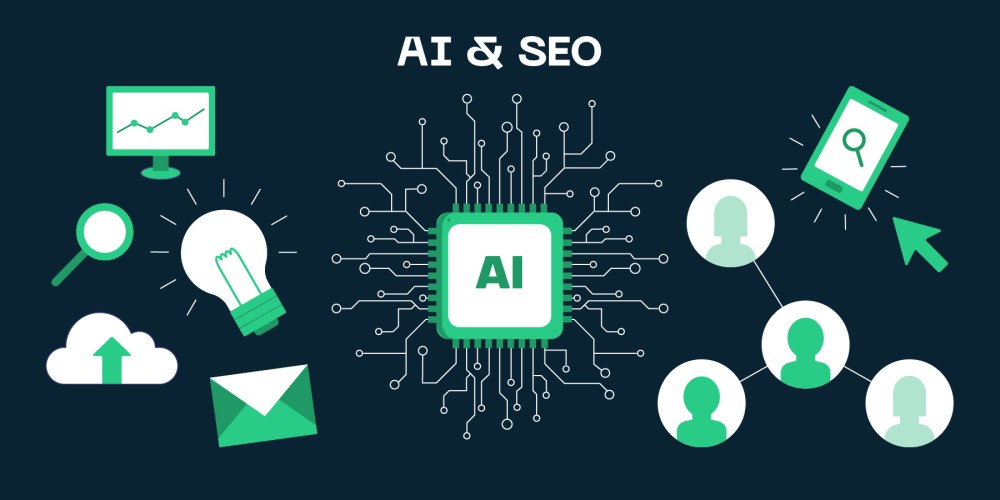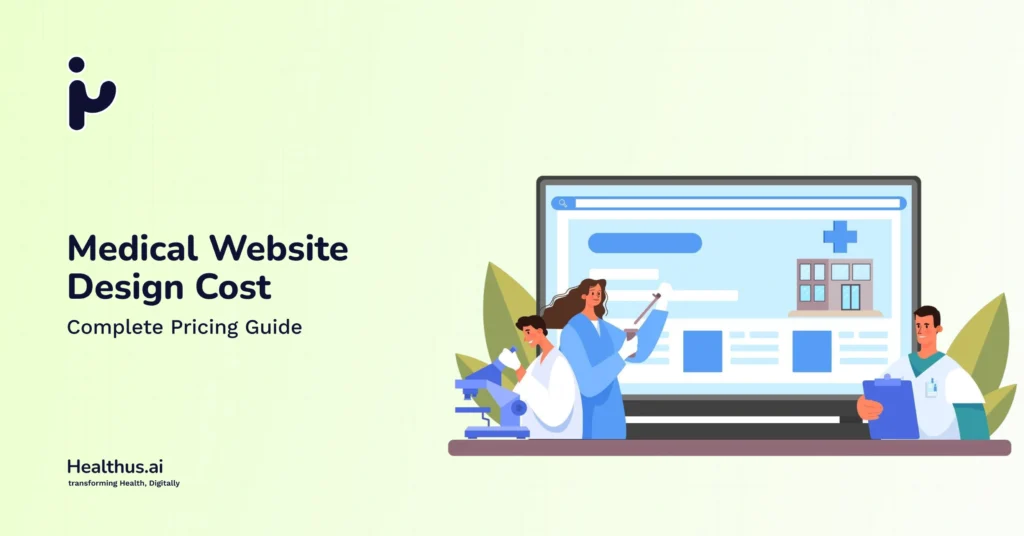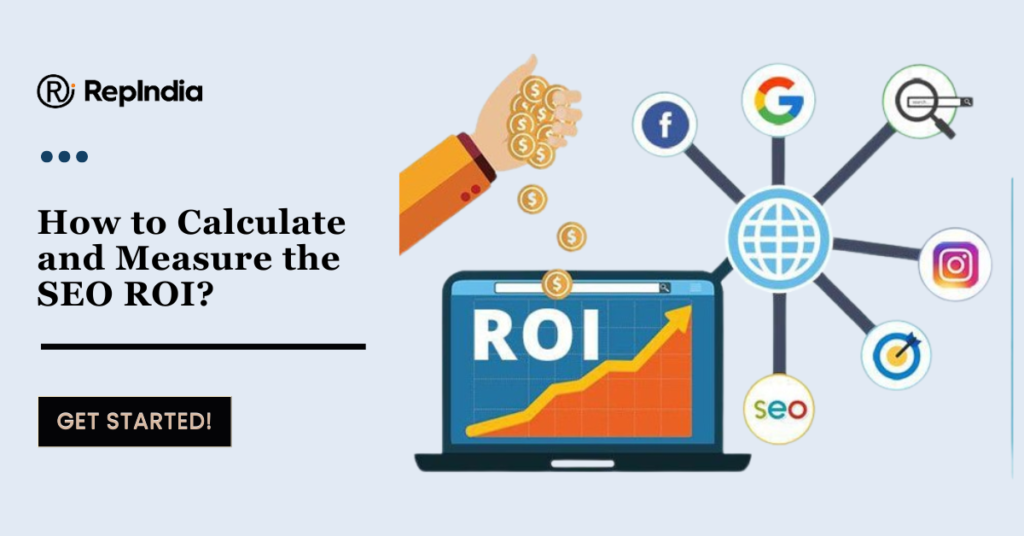Must-Read eCommerce SEO Best Practices for 2025
SEO marketing is a form of digital marketing that search-engine-optimizes websites so your target market can more easily find you.
SEO, or search engine optimization, has come a long way from keyword stuffing and clickbait titles.
In order to be listed very high on Google and other leading search engines, your site content needs to match the purpose of a prospective visitor and be an authority on the topic.
Here, learn the different types of SEO marketing and how to improve organic search rankings for your website or online business.
Table of Contents
ToggleWhat is SEO marketing?
Search engine optimization (SEO) is the act of optimizing your website to rank top in search engine result pages (SERPs) and hence bringing more traffic eventually to your website. The intent is to feature on the top page of Google results for phrases most appropriate for your target segment using organic methodologies like keyword optimization, content building, link construction, and speeding up site operation.
How SEO differs from SEM
SEO aims at organic efforts, such as publishing a blog entry to answer a question, to increase the visibility of a website in search results. SEM aims at paid advertising efforts such as pay-per-click advertisements.
Money allocation. SEM needs a budget to buy advertisements on search engines, social media, and others. Although you don’t have to pay for ranking on search engines using SEO, you need to spend money on employing a writer to make content and perhaps keyword research software.
Speed. SEO is slower than SEM in producing results. You can instantly see the results when you place an ad. SEO, however, may take months or even years to build domain authority, rank high on SERPs, and produce traffic.
Keyword utilization. An SEO professional can identify relevant keywords and produce well-written, informative content that will rank on a search engine. Keyword research is utilized by an SEM specialist, yet they have to learn how to target the phrases for effective spending.
Why is SEO marketing so crucial?
Google accounts for 63.41% of US internet traffic, and 42% of online consumers go directly to search engines to find information on products. Since search engines guide people to brands, search plays a crucial role in the success of a website.
It’s also cheaper to boost your visibility.Even though you may compensate writers to develop and refine content, you don’t have to pay for a prime position on a SERP. You may also track your SEO marketing by organic traffic, conversion, and rankings, which can help you gauge the effectiveness of your methods and provide you with more details about your visitors.
Types of SEO marketing
On-page SEO
Off-page SEO
Technical SEO
SEO efforts can be divided into three broad categories:
-
On-page SEO
The biggest bucket of SEO marketing efforts, on-page SEO is optimizing your site’s content (text, images, and videos) so that your visitors and search engines can interpret and navigate through the information you are publishing.
Writing deliberate content can assist you in establishing a connection with your audience. “I would have 200 visitors on my website who are engaging with content they do enjoy and maybe subscribe to my newsletter because they find this content valuable, rather than have 2,000 of them who just bounce after a blog post and won’t ever revisit my website again,” says Jeremiah Curvers, CEO of mattress brand Polysleep, on an episode of Shopify Masters.
Search engines seek on-page considerations such as relevance of topic and metadata to decide the quality of your content and consequently where to place your site on results pages.
Topic relevance
Highly ranked web pages in search engines have content that best aligns with users’ search intent. That is, matching the intent of searchers when they use a query and then matching what information or services they are searching for. For instance, if the keyword “masks” yields returns on beauty sheet masks, it would not be your ideal keyword if you are selling Halloween masks.
Some best practices for creating meaningful SEO content involve providing fresh information, frequently revising facts, and staying consistent with themes that fall under the expertise of your website.
Metadata
Metadata is not something that can be seen on your web pages and therefore won’t be noticeable by visitors to your site. However, meta data is stored within your HTML page code, flagging and labelling material so that search engine spiders easily get it.
Keeping meta information comprehensive and updated can increase your chances of ranking. Metadata includes:
Title tag. This is the SEO title of a webpage and sometimes the same as the headline. It should include your target keywords.
Meta descriptions. Meta descriptions summarize the contents of a web page and show up on the SERP.
Robot tags. These tags tell search engines whether to index pages and follow links.
For instance, Polysleep makes use of the term “baby mattress” on the entire product page content.

-
Off-page SEO
Your website is not the only SEO marketing place; you can produce high-quality, original content, such as an interview with an authority in your niche, to make other sites refer to yours. When someone’s website links to you (a backlink), they are, in a way, recommending you. Such backlinks may enhance your domain authority, and that may improve your search engine rankings.
Backlinks
PageRank is a component of Google’s algorithm. It scans the relationship between websites and the pages that they link to. This system of ranking was one of Google’s first methods of determining search engine results and is still a significant component of SEO marketing strategy.
By getting links from authoritative sites, you’ll be building your topic authority and ranking power. In essence, the more quality backlinks you possess, the more authoritative search engines will view your site.
Domain authority
As you build content, links, and organic search traffic, your website’s domain authority will rise.
Domain authority is a metric that reflects how trustworthy a site is according to search engines. High domain authority sites tend to rank higher in search engine result pages for terms related to their niche.
-
Technical SEO
Technical SEO is about making adjustments behind the scenes of your site to enhance search performance. Technical SEO keeps your site fast, search engine crawler-optimized, and mobile-friendly.
Mobile-friendliness
Over 60% of web traffic is now mobile. Search engines serve these users by sending them to websites that provide a good mobile browsing experience. This involves responsive design, where content automatically adjusts according to users’ screen size, touch-friendly design, and easy navigation.
Almost all contemporary web themes are responsive, yet you must always test your site by actually visiting it on a cell phone. It catches potential trouble with text, buttons, and tempo.
Site speed
Search engines prefer to direct their users to sites with a positive user experience. A site that makes them wait—even just a few extra seconds—can spoil their experience.
Shopify stores are faster than websites on other website builders because Shopify was designed for speed. Some 93% of Shopify-using businesses have a fast website—that’s more than any other prominent commerce platform.
Shopify stores are 2.4 times faster than other platforms.
4 SEO marketing strategies
Keyword research
Competitive analysis
Link building
Image optimization
Whether you’re planning SEO for a Shopify store or another website, here’s an SEO checklist for you to climb those search results.
-
Keyword research
Each page on your website that shows up in search engine rankings is connected to one or more keywords (also referred to as search queries). The initial task of SEO is to determine the keywords others search for to land on your page. Free tools such as Ahrefs or Ubersuggest assist you in assessing keyword popularity and ranking difficulty. Tools can also offer suggestions of keywords you may use in your niche and check your website to know which keywords you already rank. Use this information to know which existing keywords are most important to your website and what new keywords you wish to target.
Ideally, keywords should be popular enough to generate significant traffic but not so popular that you’re competing with websites and companies with marketing budgets beyond your scope. For example, say you’re creating an SEO marketing strategy for a candle business, and the brand groups its collections by:
Scent (e.g., fruit-scented candles)
Color (e.g., red candles)
Occasion (e.g., Christmas candles)
Material (e.g., beeswax candles)
If “scented candles” has 1,000 monthly searches and a difficulty of hard, but “fruit scented candles” has 350 and a difficulty of easy, you might go with the latter phrase because there’s less competition, it’s still somewhat relevant to your brand, and it can potentially bring in a few thousand views over a year’s time. You can then utilize the phrase as a product page title in an H1 tag.
You can also find keywords that are not associated with one of your products, like “how to extend candles” or “how to trim candlesticks.” You can utilize these keywords for individual blog posts and insert them into your title, body text, and image alt tags to assist with building your authority in your niche. For instance, Original Duckhead releases blog posts regarding sustainability that transcend its product range to make itself a leader in the area. Free keyword research template
Utilize this free keyword research template to find opportunities and take control of your SEO process. Drive relevant traffic to your website by monitoring search volume, rank difficulty, user intent, and content ideas.
-
Competitive analysis
Once you’ve determined the keywords you’re looking to rank for, your next step is conducting SEO competitors research who are already well-ranking for your keywords.
By observing what your competition is doing with SEO, you will be able to develop methods of getting ahead of them and further up the list. With useful, relevant, and high-quality content, small business can utilize SEO to compete with big business and reach consumers before them.
One of the first things to accomplish in competitive research is to find out what keywords your competitors are aiming for and how high up they are ranking. Keyword tools and a search of single competitor pages or their entire site can be utilized to find out what keywords your competitors are targeting. You may discover, for instance, that a competitor is targeting the term “women’s leopard print jeans” on a collection page. If you sell a similar product, you can target the same term.
But first, ask yourself this: Can I reasonably create a better page that serves my business? If the answer is no, go on to the next opportunity. The goal is to find opportunities where you can succeed that also make business sense. Trying to rank for searches that are about products you don’t sell or aren’t even related to your core business is a time waster.
-
Link building
While time-consuming, link building is an established method to improve your rankings in search engines. Getting links to your website from more trusted sites informs search engines that your content is time-worthy for visitors.
To start implementing a linking strategy, create a presence on social media websites and local business listings. The links you create from social media websites won’t increase your search engine visibility, but they can assist in making your site more noticeable.
You can also market your business or products to news sites or websites that have the same target market. You can provide a guest blog post with a link to your site if you possess knowledge of the subject matter. You can also concentrate on your blog and produce useful content like infographics, case studies, white papers, surveys, or statistics others will be able to quote.
-
Image optimization
While Google and other search engines are interested in your website’s written content, they also crawl your images and media. In fact, 34.7% of Google searches yield images. Image optimization on your site can assist in boosting your on-page SEO along with adding accessibility elements to your users.
Begin with inserting descriptive keywords into image file names and creating useful alt text of less than 125 characters for every image on your website. An example of good alt-text for a Cherry Blossom, pink candle picture would be: “A pink candle called Cherry Blossom in a glass jar on a white background.”
Second, ensure your images are the optimal size and file type. Google prefers big, beautiful images—it simply doesn’t adore enormous file sizes that result in slower load times. Optimize images and employ efficient file types, like.png or.webp, to enhance the user experience and reduce load times.
Measuring SEO success: key metrics to monitor
As with any online marketing strategy, the only way to know if you’re making progress toward your goals is to track key performance indicators (KPIs). Those most applicable metrics to SEO marketing are:
Organic traffic. This measures how much traffic came to your site through non-paid sources. You can use something like Google Analytics for this metric.
Backlinks. These are the number of websites linking to your site from theirs. Use a tool like Semrush or Ahrefs to analyze your existing backlinks, and use guest blogging and content marketing to build new backlinks.
Keyword rankings. Learn which keywords you’re ranking for and which ones are worth creating content around with a tool like Moz.
Organic conversions. Find out how many individuals converted after passing through a non-paid source. A conversion can be a purchase, signup, account creation, or another action you want. You can measure conversions using Google Analytics.
Organic click-through rate. This is the number of individuals who viewed and clicked your listing in the SERP. You can find organic CTR using Google Search Console.
Core Web Vitals. Google quantifies website health via Core Web Vitals through three important metrics: Largest Contentful Paint (load time of largest image), First Input Delay (response time for user interaction), and Cumulative Layout Shift (visual stability). These can be examined in Google Search Console.
The future of SEO: Trends to watch in 2025
Generative AI for content creation and optimization
Increased topical authority
Rise of zero-click searches
SEO takes time to have an effect, but the sector can act fast. Three key trends to watch out for in 2025 are:
Generative AI for content creation and optimization
Artificial intelligence has permeated most areas of contemporary marketing. SEO is no exception.
AI content tools such as Shopify Magic and Jasper are able to create marketing copy out of a brief prompt. Make this better using keyword optimizing tools such as Surfer—and boom, you now have tons of interesting optimized copy ready to insert into your site.
Expanded topical authority
Generative AI proved so popular that Google did a full 360 on its initial position to demote AI-generated content in search results. There’s a but, however: In January 2025, Google instructed its quality raters to rate pages whose primary content is obviously AI-generated as “Lowest quality”. Businessmen who utilize AI to create content must adhere to Google’s E-E-A-T guidelines. It dictates content to be created with:
Expertise
Experience
Authoritativeness
Trustworthiness
There are several ways to satisfy this requirement with AI-created content. Maybe you employ AI to generate an outline, but you write the draft yourself, incorporating your (or someone else’s) experience to demonstrate credibility. Cite recent research and fact-check the AI recommendations to verify accuracy.
You could also contribute articles to leading publications in your industry. Ask for an author profile in exchange for the content and boast about your credentials—whether that’s a professional certification, extensive industry experience, or examples of where you’ve been featured in the press. This helps cater to one checkbox on Google’s checklist: “Is this content written or reviewed by an expert or enthusiast who demonstrably knows the topic well?”
Increase of zero-click searches
Not all searchers use search engines to get to a website. In some instances, the user is looking for a fast answer—such as the business hours of a company or the cost of an item. Zero-click searches accommodate these behaviors by providing an immediate answer without the searcher needing to click through to a site.
Although this may not sound like an advantage for ecommerce brands, Google does provide publishers with the chance to provide instant answers (and therefore establish brand authority) via search features such as:
Featured snippets
AI Overviews
Knowledge panels
People Also Ask boxes
Boost the chances of showing up in these zero-click snippets by developing high-quality content that responds to the search question. Structure your content to allow search engine spiders to locate this response. A method to target the People Also Ask area, for example, is through developing an FAQ page with concise, brief responses that are simple for Google to quote.

FAQS:
Q. What is SEO marketing?
SEO means search engine optimization. SEO is a measurable, repeatable process to let the search engines know your pages are eligible to be included in organic search results.
Q. What is SEM?
Search engine marketing, or SEM, is copy on a web page that is relevant to generate ideal customers primarily through paid search engine listings. Traffic can be generated by creating new web pages or by optimizing current web pages.
Q. Is SEO a marketing skill?
SEO is a marketing skill because it entails web content and traffic driving by deliberate measures. SEO proficiency demands proficiency in keyword research, optimization, and technicalities for ensuring websites search engine algorithm compliant.
Q.What is an example of SEO marketing?
One excellent example of SEO marketing is creating blog articles with targeted keywords the customers are searching for. This enhances the possibility of showing top of the search engine result pages. It also generates conversions since it attracts customers searching for information or solutions.
Q.How do I begin SEO marketing?
The following are the steps to begin SEO marketing:
-Choose a keyword with a decent search volume.
-Understand the search intent of your keyword.
-Utilize your keyword research outcomes to write your page.
-Optimize your meta page title and description.
-Publish your page.
-Create links to your page or website.
Q. Is SEO marketing paid?
SEO marketing is not paid because it is about optimizing organic search rank.
Q. How does SEO differ from SEM?
SEO tries to lure organic traffic, whereas SEM applies paid advertisements in order to take visitors to your website.








Rahul M.
B2B Service Provider